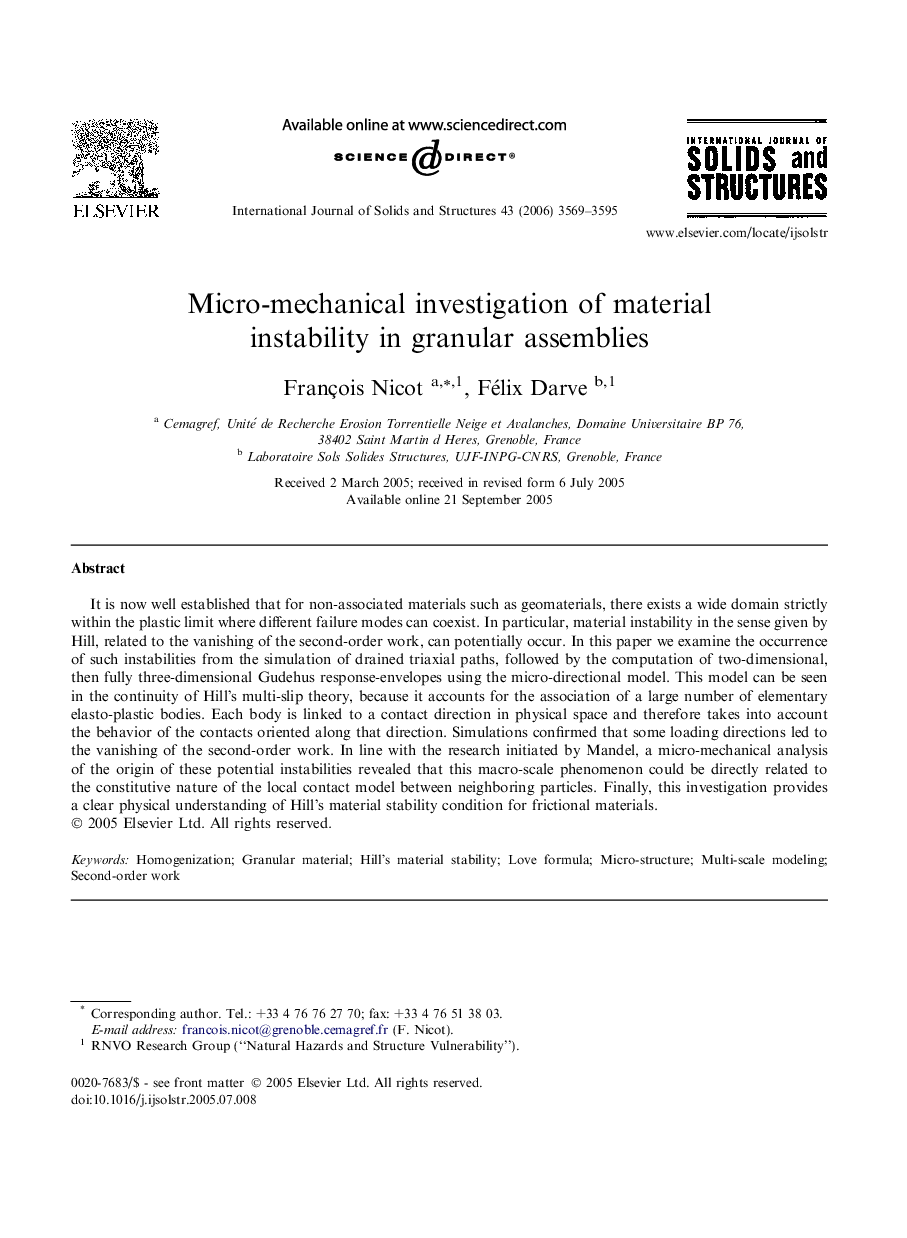| Article ID | Journal | Published Year | Pages | File Type |
|---|---|---|---|---|
| 280435 | International Journal of Solids and Structures | 2006 | 27 Pages |
It is now well established that for non-associated materials such as geomaterials, there exists a wide domain strictly within the plastic limit where different failure modes can coexist. In particular, material instability in the sense given by Hill, related to the vanishing of the second-order work, can potentially occur. In this paper we examine the occurrence of such instabilities from the simulation of drained triaxial paths, followed by the computation of two-dimensional, then fully three-dimensional Gudehus response-envelopes using the micro-directional model. This model can be seen in the continuity of Hill’s multi-slip theory, because it accounts for the association of a large number of elementary elasto-plastic bodies. Each body is linked to a contact direction in physical space and therefore takes into account the behavior of the contacts oriented along that direction. Simulations confirmed that some loading directions led to the vanishing of the second-order work. In line with the research initiated by Mandel, a micro-mechanical analysis of the origin of these potential instabilities revealed that this macro-scale phenomenon could be directly related to the constitutive nature of the local contact model between neighboring particles. Finally, this investigation provides a clear physical understanding of Hill’s material stability condition for frictional materials.
